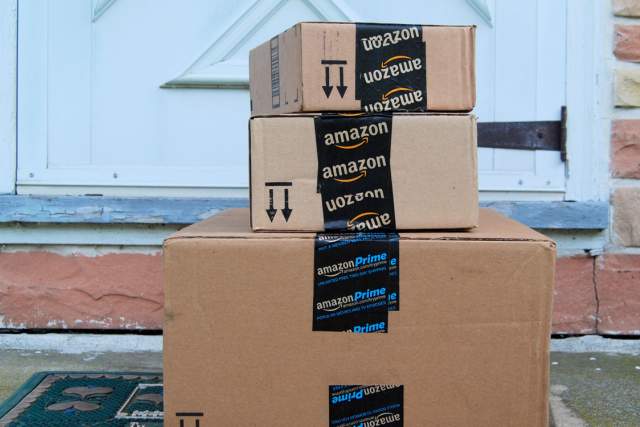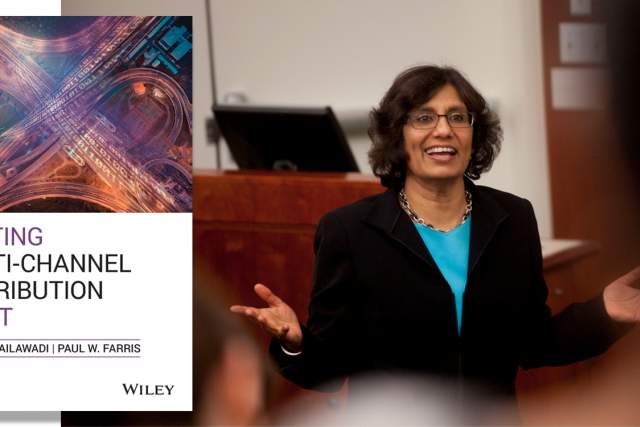It is common knowledge these days that multichannel shopping is associated with higher customer profitability.
Armed with this knowledge, savvy retailers now offer a multitude of channels for their customers to engage with the firm, such as through brick-and-mortar stores, websites, and mobile apps. But with the multichannel milestone behind them, there’s still another that’s tantalizingly out of reach for most firms: a truly omnichannel strategy, which is defined as a seamless, personalized customer experience integrated across the firm’s multiple channels.

Tuck Assistant Professor of Business Administration Sharmistha Sikdar’s research topics include multivariate modeling problems, ecommerce, customer relationship management, customer analytics, multichannel marketing, and more.
What does that look like in the ideal scenario? Imagine browsing online for a pair of jeans at a retailer website, but not buying them. Then, while visiting the retailer’s offline store for a different item, at check-out the sales agent offers you a discount on the same jeans that you browsed online. Or maybe you are a frequent in-store shopper at an appliance retailer. On one occasion you look up a kitchen appliance on the retailer’s mobile app and a few days’ later you receive an in-store redeemable coupon on the same item.
Effective omnichannel strategies such as these can be built when different channels of the firm integrate and share the customer’s observed multichannel usage data. Firms can use this data to develop integrated and targeted cross-channel strategies to improve customer engagement, expand relationships and increase loyalty. To build targeted and effective cross-channel strategies, multichannel firms need to know the right time to communicate promotional messages to their customers and the right channels to incentivize the customer to visit.
In a new working paper, co-authored with Professor Giles Hooker of U.C. Berkeley’s Department of Statistics, Tuck assistant professor Sharmistha Sikdar tackles some of the important questions that will help multichannel retailers determine the timing of their promotional messages and also the appropriate channel usage to incentivize in the messages: When will the customer use the firm’s channels again? Which channel is the customer likely to use next? Is the customer likely to buy the next time they visit the channel? How long is the customer likely to stay engaged with a channel? How long is the customer likely to stay inactive before they return to reengaging with the channels?
Sending promotions to customers is both costly, in terms of lost revenue opportunities, and risky, in terms of irritating people with too frequent or ill-timed messages. If a firm can accurately predict when and from which channel a customer will make a purchase, it can target its promotions for optimal return on investment. What I wanted to do through this project is to predict when a customer is likely to visit a firm’s website versus its store, and how long that customer will deliberate about their purchase before buying,
Sikdar explains. In addition, a critical component to timing the message is to know when not to send a message.
What I wanted to do through this project is to predict when a customer is likely to visit a firm’s website versus its store, and how long that customer will deliberate about their purchase before buying.
—Sharmistha Sikdar
Predicting these customer behaviors can be difficult for two reasons: the customer’s motivation to engage with the firm after a browsing or buying activity is unknown (i.e., latent), and the customer’s path to purchase is dynamic, meaning that the timing and channels vary from purchase to purchase. For example, a customer may go to a firm’s website and make a purchase; a few weeks later, the same customer may go to the website, browse, and then leave; then, a few months later, that customer may make a purchase from the mobile app.
The context for Sikdar and Hooker’s paper is an Asian high-end beauty care brand with a direct-to-consumer website and physical stores. The authors used the online and offline purchase data and web visits of the customers of this firm to develop a dynamic model that can predict customers’ website or store usage behavior and infer their underlying hidden motivations—to buy, browse, or do nothing at all.
Prior studies have used what are called hidden Markov
models to predict customers’ hidden states (e.g., intention to buy). Sikdar and Hooker build on that knowledge by applying a hidden semi-Markov
model that can also predict the duration or length of time spent in a given hidden state. By measuring and modeling how long a customer is engaged with its channels, it helps the firm know the duration for which they can send the customer promotional material. Likewise, knowing how long a customer is likely to be unengaged with the firm’s channels will help the firm know how long before the customer comes back,
Sikdar says. If the firm knows a customer will be engaged with the firm for another week, it knows not to send the customer promotions after that, because the messages will fall flat. The customer is already disengaged at that point, and they’re thinking: Stop bothering me with so many useless emails.
Using our model, these firms can uncover their customers’ states and the duration of those states, and then use that knowledge to decide what promotions to send to their customers, and when to send them.
—Sharmistha Sikdar
Using their unique model and the data from the beauty care firm, Sikdar and Hooker uncovered four distinct states of customer engagement with varying duration: dormant, casual online browsing, active online browsing, and multichannel browse and buy. On average, they found that customers spent close to seven weeks as dormant, and approximately four weeks in each of the casual and active online browsing states. The multichannel browse and buy state is slightly over a day indicating that when in this state, the customer’s online browsing behavior is directed towards closing the purchase cycle,
they write.
One of the most interesting findings from the study is that most customers move directly from dormant to multichannel browse and buy; the majority of the casual and active online browsing customers end up returning to the dormant state. That means they browse a lot and then go inactive,
Sikdar says. This could be because either they delay the purchase as the product is too expensive, or they are looking at other retailers selling similar products at lower prices. So the firm may need to reevaluate their promotions strategy especially when the customer is in the casual or active online browsing state to prevent the customer from relapsing into dormancy without making a purchase.
While these particular findings only interpret data from one multichannel firm, Sikdar and Hooker’s model can be customized and implemented by any multichannel firm that gathers data on its customers’ engagement. Using our model, these firms can uncover their customers’ states and the duration of those states,
Sikdar says, and then use that knowledge to decide what promotions to send to their customers, and when to send them.

